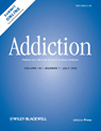
While drinking in the event is an important factor in injury occurrence, pattern of usual drinking may also be important in risk of injury. Explored here is the relationship of an alcohol-related injury with individual usual drinking pattern.
Alcohol-related injury is examined using Hierarchical Linear models, taking into account individual usual volume of consumption over the past 12 months, as well as aggregate-level detrimental drinking pattern (DDP) and alcohol policy measures.
Data analyzed are from emergency departments (EDs) in 19 countries, comprising three collaborative studies on alcohol and injury, all of which used a similar methodology.
The sample consists of 14,132 injured drinkers across 46 ER studies.
Alcohol-related injury was measured, separately, by any self-reported drinking prior to injury, a blood alcohol concentration (BAC) ≥.08, and self-reported causal attribution of injury to drinking.
While individual usual volume strongly predicted an alcohol-related injury for all three measures, usual drinking pattern also predicted an alcohol-related injury (controlling for volume), with episodic heavy and frequent heavy drinking both more predictive of alcohol-related injury than other drinking patterns. When individual usual volume and drinking pattern were controlled, DDP was no longer a significant predictor of alcohol-related injury. Alcohol policy measures were predictive of both BAC and causal attribution (the stronger the policy the lower the rates of alcohol-related injury)
Volume of alcohol typically consumed and occurrence of heavy drinking episodes are independently associated with incidence of alcohol-related injury. The stronger the anti-alcohol policies in a country, the lower the rates of alcohol-related injury.
Read Full Abstract
Request Reprint E-Mail: ccherpitel@arg.org